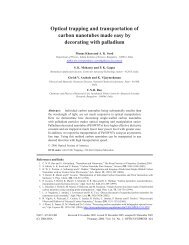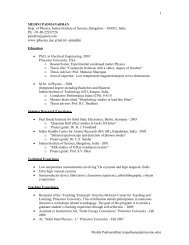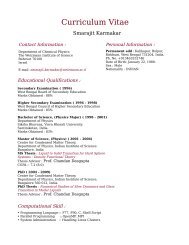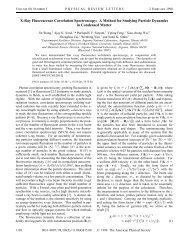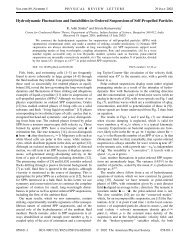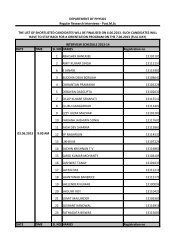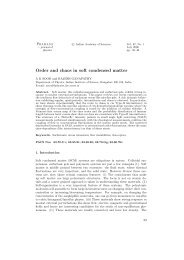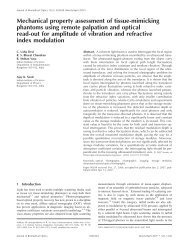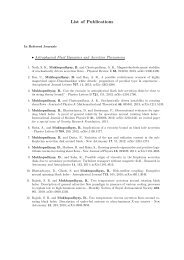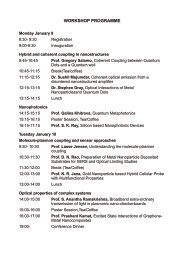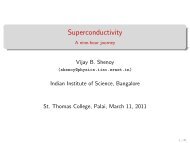Thermoelectric Properties of Fe0.2Co3.8Sb12-xTex ... - Physics
Thermoelectric Properties of Fe0.2Co3.8Sb12-xTex ... - Physics
Thermoelectric Properties of Fe0.2Co3.8Sb12-xTex ... - Physics
You also want an ePaper? Increase the reach of your titles
YUMPU automatically turns print PDFs into web optimized ePapers that Google loves.
Study <strong>of</strong> effect <strong>of</strong> alkali mixture on V - O bond length in<br />
Oxyfluoro Vanadate glasses using Raman spectroscopy.<br />
Gajanan V Honnavar # * and K P Ramesh<br />
Department <strong>of</strong> <strong>Physics</strong>, Indian Institute <strong>of</strong> Science, Bangalore – 560 012, India<br />
#<br />
On leave <strong>of</strong> study from PES Institute <strong>of</strong> Technology, Bangalore South Campus (Formerly PES<br />
School <strong>of</strong> Engineering), Near Electronic city, Hosur Road, Bangalore – 560 100, India.<br />
*author for correspondence: gaju@physics.iisc.ernet.in<br />
Abstract:<br />
Raman spectroscopic study on Oxyfluoro Vanadate glasses containing various proportions <strong>of</strong> lithium<br />
fluoride and rubidium fluoride were carried out to see an effect <strong>of</strong> mixture <strong>of</strong> alkali on vanadium -<br />
oxygen (V – O) bond length. Glasses with general formula 40V 2 O 5 - 30BaF 2 - (30 - x) LiF - xRbF (x =<br />
0 – 30) were prepared. Room temperature micro Raman spectra (Fig a and Fig b) <strong>of</strong> these glass<br />
samples (VBL to VBR) were recorded in back scattering geometry. The data presented is in “reduced<br />
Raman intensity” form with maximum peak scaled to 100[1]. We have used υ = A*exp(BR), where A<br />
and B are fitting parameters (see Franklin D Hardcastle and Israel E Wachs, 1991[2]) to correlate the<br />
bond length R with Raman scattering frequency υ. We observed that variation in bond length and its<br />
distribution about a most probable value can be correlated to the alkali environment present in these<br />
glasses. We also observed that the network forming unit is more homogenous when its first Coordination<br />
is all Rubidium than all Lithium.<br />
References: [1] Wim J Malfait and Werner E Halter, Phy.Rev.B 77, 014201(2008)<br />
[2] Franklin D Hardcastle and Israel E Wachs, J. Phys. Chem. 95, 5031(1999)



